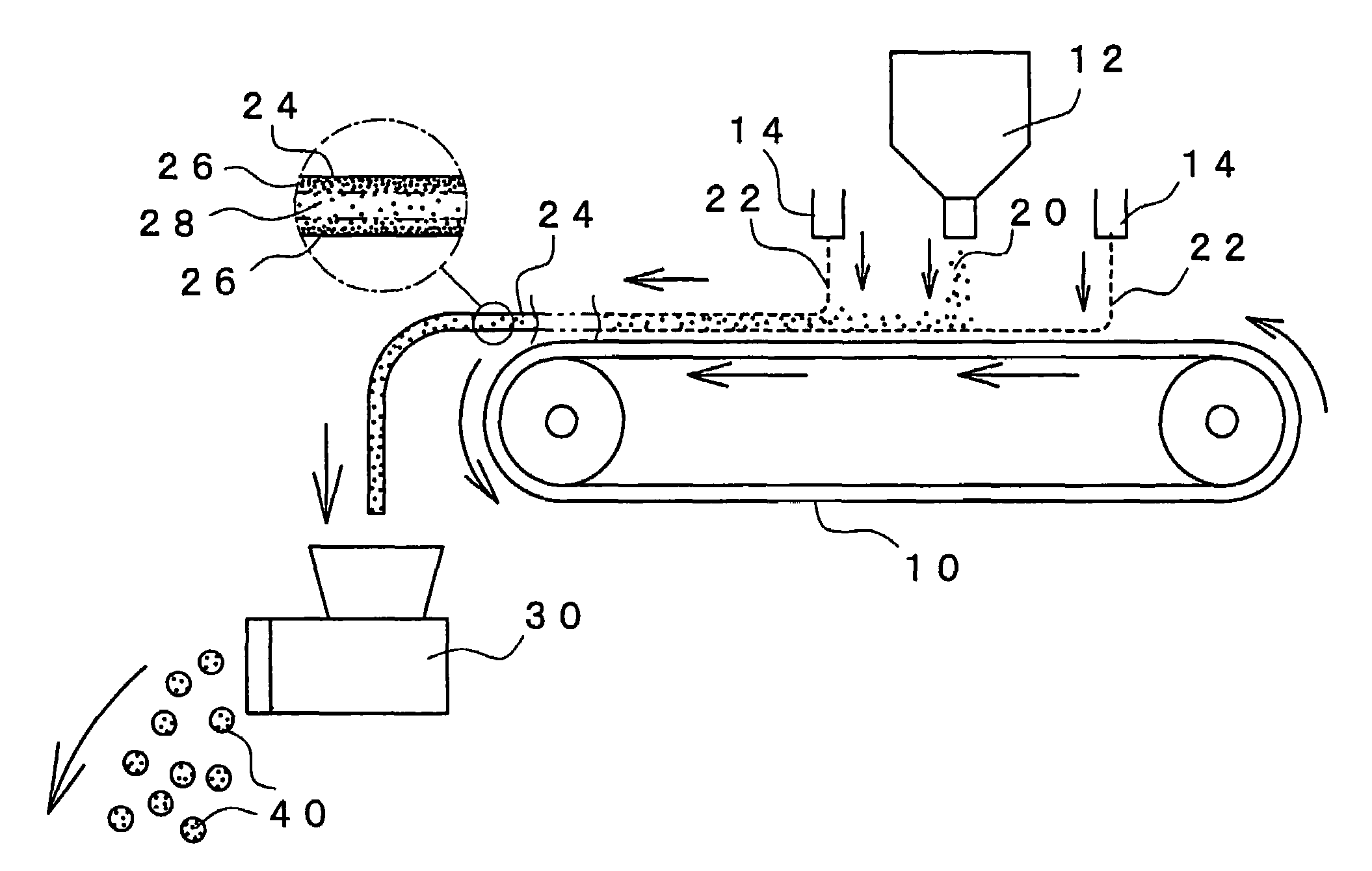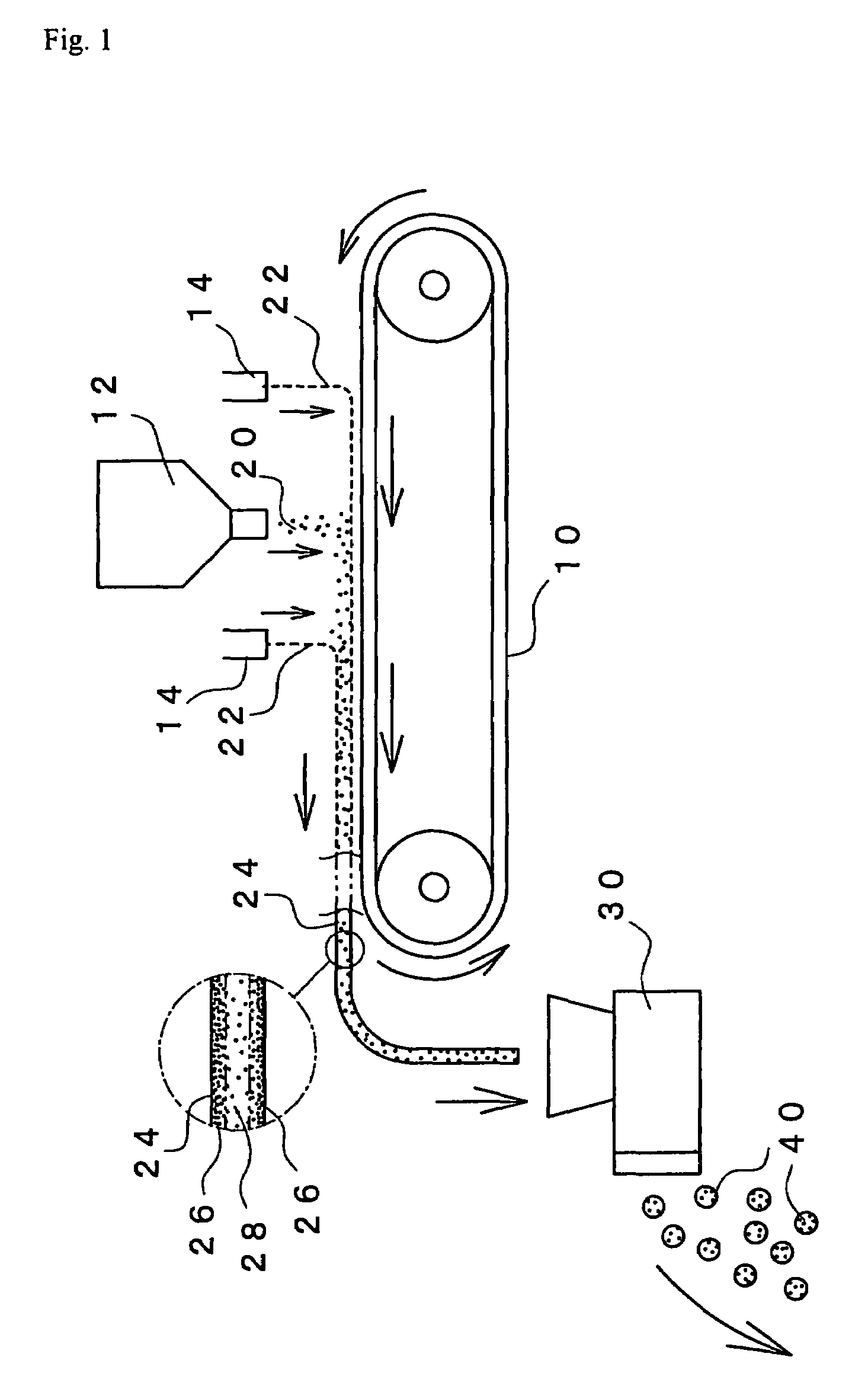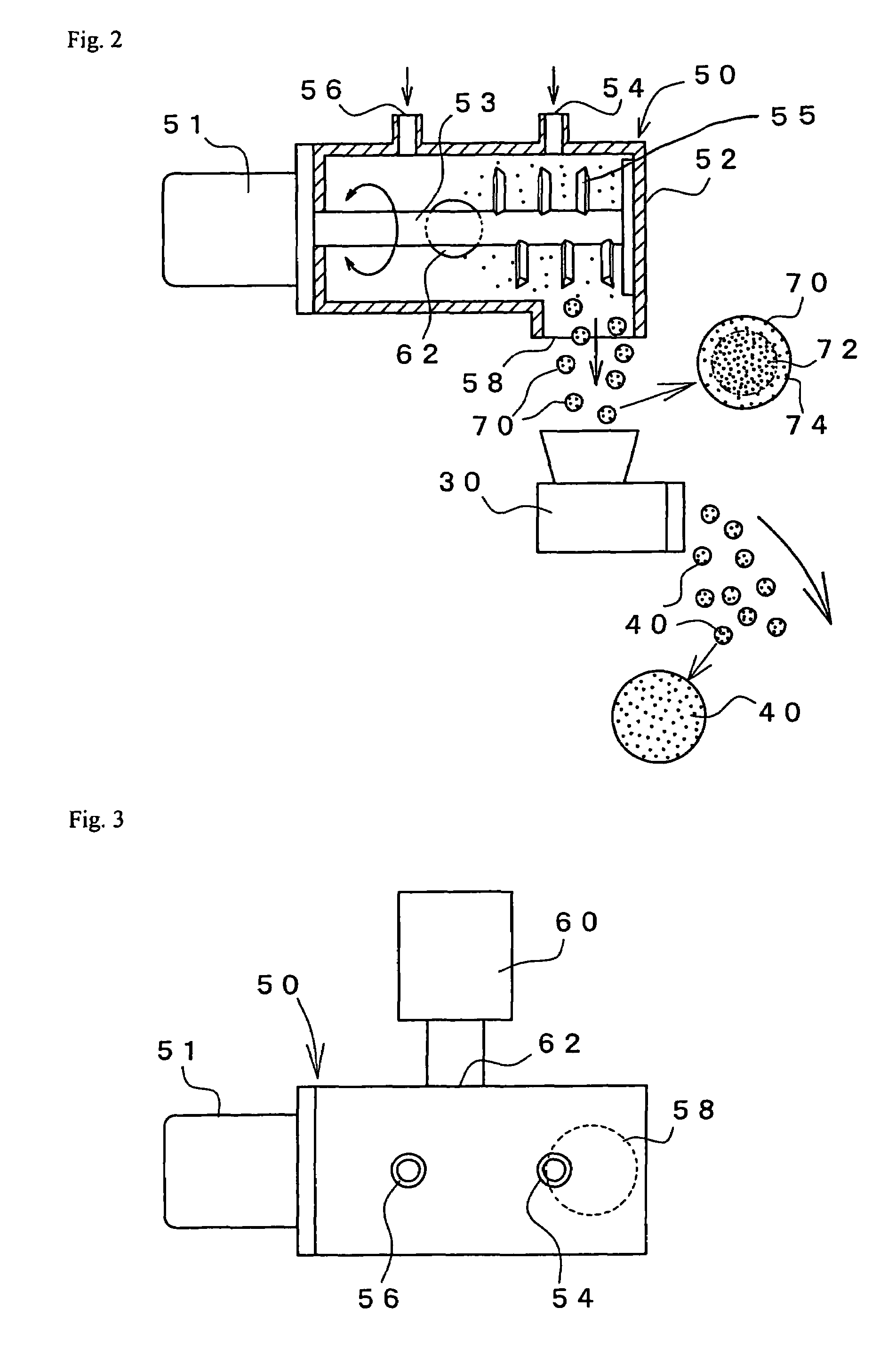Process for production of water-absorbing material
a technology of water-absorbing material and process, which is applied in the field of water-absorbing resin, can solve the problems of fine powder, inability to be used as a product, and difficulty in uniformly adding aqueous liquid thereto, and achieves the effects of strong tackiness or adhesion, easy handling, and easy drying and removal of water
- Summary
- Abstract
- Description
- Claims
- Application Information
AI Technical Summary
Benefits of technology
Problems solved by technology
Method used
Image
Examples
referential example
Production of Water-Absorbent Resin Powder (α)
[0208]In a reactor as formed by lidding a jacketed stainless twin-arm kneader of 10 liters in capacity having two sigma-type blades, there was prepared a reaction liquid by dissolving 7.40 g of polyethylene glycol diacrylate (molar-number-average degree “n” of addition polymerization of ethylene oxide=9) into 5,500 g of aqueous solution of sodium acrylate having a neutralization degree of 75 mol % (monomer concentration: 38 weight %, average molecular weight of monomers: 88.5). Next, dissolved oxygen was removed from this reaction liquid under an atmosphere of nitrogen gas for 30 minutes. Subsequently, 28.3 g of 10 weight % aqueous sodium persulfate solution and 2.1 g of 1 weight % aqueous L-ascorbic acid solution were added thereto under stirred conditions. As a result, polymerization started after about 1 minute. Then, the polymerization was carried out in the range of 20 to 95° C. while the forming gel was pulverized. Then, the result...
example 1
Via Particulate Hydrous Material of Water-Absorbent Resin (Process 1)
[0211]An amount of 500 g of the water-absorbent resin powder (α2) (having particle diameters of smaller than 150 μm), which had been obtained from Referential Example, was placed into 5-liter Lödige Mixer (M5R type, produced by Gebrüder Lödige Maschinenbau GmbH). Then, while the main shaft (plow-shaped blades) of the Lödige Mixer was revolved at a high speed of 330 rpm, 330 g of water was added thereto all at once.
[0212]Immediately after the addition of water, the stirring was stopped, and then the resultant hydrous material of the water-absorbent resin was quickly got out.
[0213]The resultant hydrous material of the water-absorbent resin was the reversed-fisheye-shaped hydrous material 70 of the water-absorbent resin of about 10 mm in average particle diameter having a lower water content in the surface and a higher water content in the central portion.
[0214]The outside and inside water contents of the resultant re...
example 2
Via Sheet Hydrous Material of Water-Absorbent Resin Constituted by Three Layers Having Different Water Contents (Process 2)
[0218]The apparatus of FIG. 1 was used. A thin layer of water was formed on the upside of the belt conveyor of 50 cm in width (which was being run at a set speed of 0.58 n / min (10 Hz) and of which the surface had been coated with a fluororesin) by supplying thereto water at 17.79 g / min from a spray nozzle (KB80063 produced by Ikeuchi) as disposed above the belt conveyor. The water-absorbent resin powder (α2) (having particle diameters of smaller than 150 μm), which had been obtained from Referential Example, was placed into an accurate feeder (produced by Kuma Seisakusho), and the amount of the fine powder being supplied by this feeder was set at 90 g / min. Incidentally, the water-absorbent resin powder (α2) had beforehand been heated to 70° C. This water-absorbent resin powder (α2) was supplied by the above feeder onto the belt conveyor on which the thin layer o...
PUM
| Property | Measurement | Unit |
|---|---|---|
| temperature | aaaaa | aaaaa |
| particle diameter | aaaaa | aaaaa |
| weight-average particle diameter | aaaaa | aaaaa |
Abstract
Description
Claims
Application Information
 Login to View More
Login to View More - R&D
- Intellectual Property
- Life Sciences
- Materials
- Tech Scout
- Unparalleled Data Quality
- Higher Quality Content
- 60% Fewer Hallucinations
Browse by: Latest US Patents, China's latest patents, Technical Efficacy Thesaurus, Application Domain, Technology Topic, Popular Technical Reports.
© 2025 PatSnap. All rights reserved.Legal|Privacy policy|Modern Slavery Act Transparency Statement|Sitemap|About US| Contact US: help@patsnap.com



